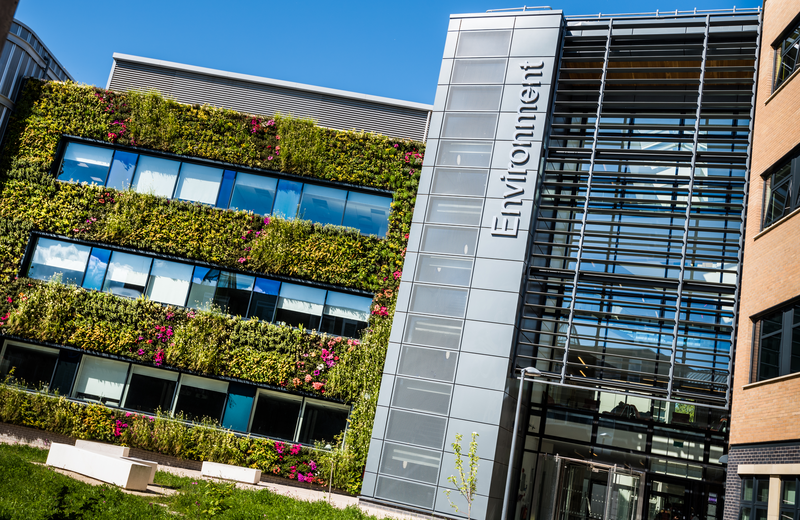
Geochemical impacts of urban greening
Geochemical impacts of urban greening: making the evidence work for decision makers
Aims and Objectives
The use of green infrastructure elements (e.g. living walls, bioswales, roof gardens) in cities is increasingly encouraged. These features provide a very diverse range of benefits, from improved mental health to flood mitigation, aesthetic appeal to pollutant removal. Their value tends to lie in multiple modest impacts across a range of issues, rather than a single discrete benefit. To properly evaluate urban greening schemes, the sum of all benefits (plus any dis-benefits) must be considered. This requires a highly interdisciplinary evidence base in which research from all relevant fields is equally accessible and usable for decision makers.
This project aims to improve inclusion of the air and water impacts of urban greening in this evidence base. This will be achieved by learning from the approaches taken by other disciplines, especially public health, environmental economics and ecosystem services. We will consider how geochemical evidence can be presented more effectively to decision makers, in a manner aligned with that from other disciplines. Key findings and recommendations for future research directions will be presented in a publication alongside a review of the existing geochemical evidence. The project will also facilitate creation of an interdisciplinary community of York researchers interested in urban greening, by hosting a workshop and initiating networking opportunities.
Principal Investigator
Rosie Chance, Wolfson Atmospheric Chemistry Laboratories, Department of Chemistry
Co-Investigators
Professor Alastair Lewis, Wolfson Atmospheric Chemistry Laboratories, Department of Chemistry
Dr Sarah Moller, Wolfson Atmospheric Chemistry Laboratories, Department of Chemistry
Professor Piran White, Department of Environment and Geography
Dr Julia Touza-Montero, Department of Environment and Geography